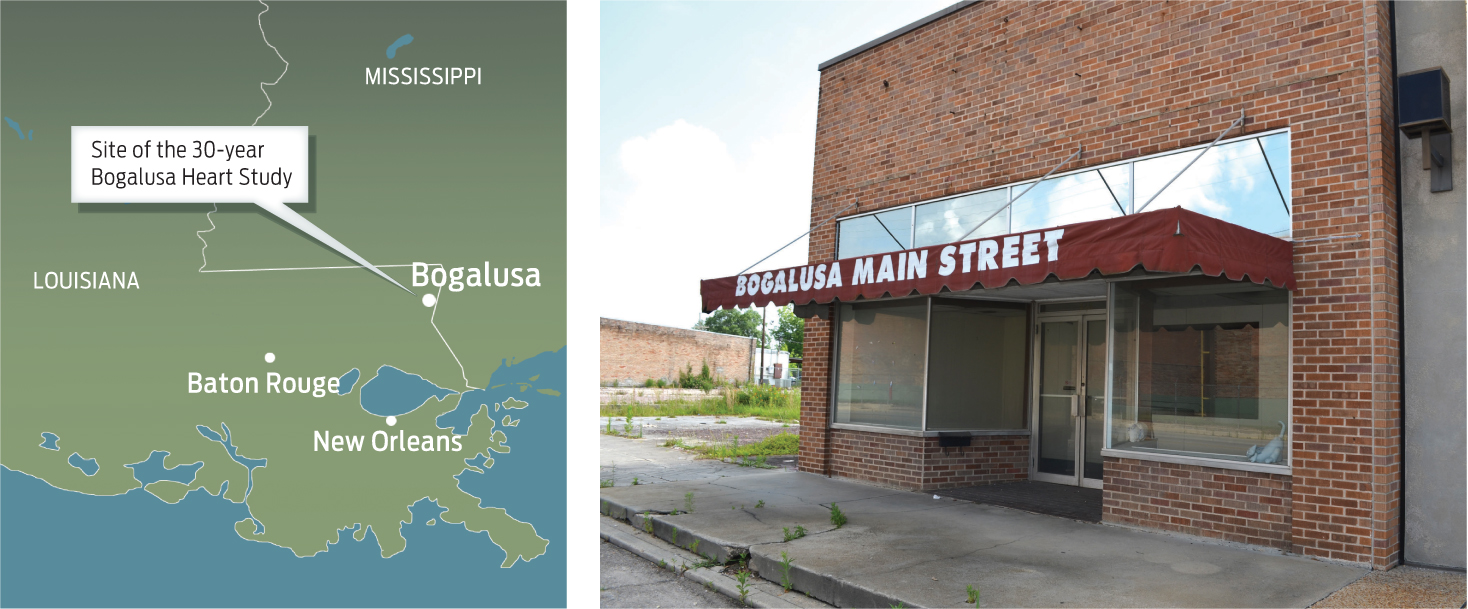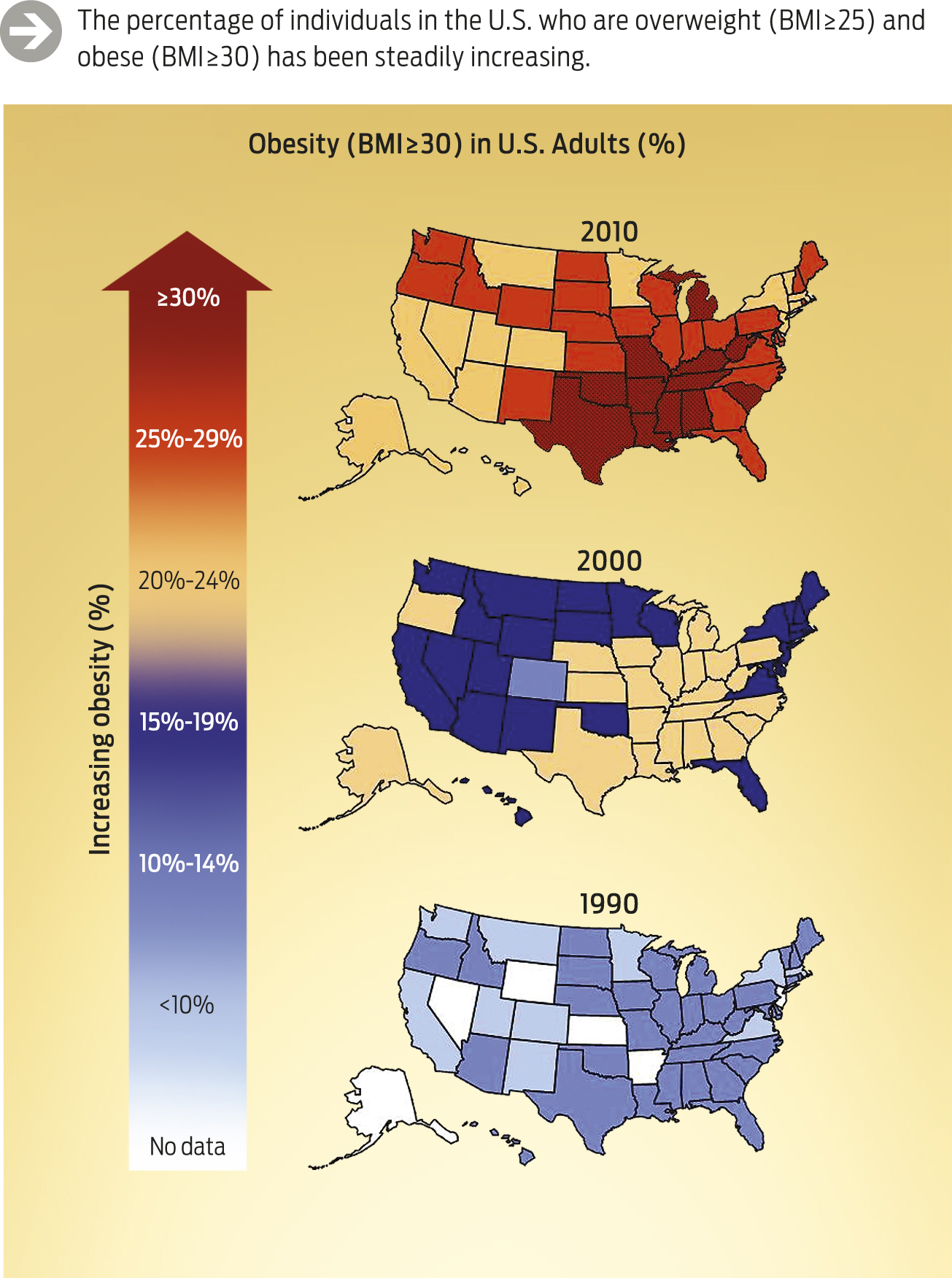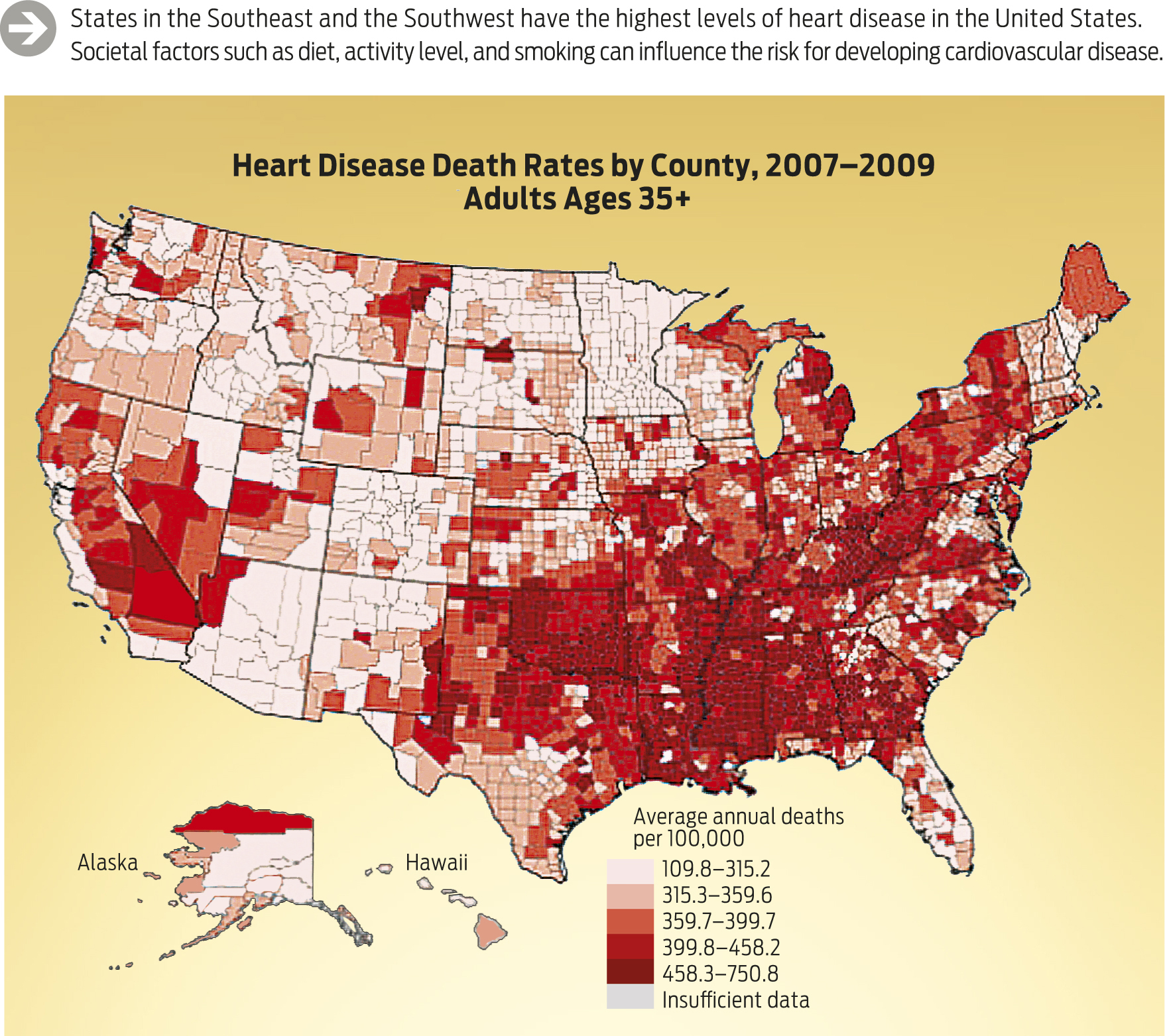SOUTHERN DISCOMFORT
If Louisiana is shaped like a boot, then the town of Bogalusa sits in ideal kicking position—right at the easternmost toe. It's a fitting location for a town that has been beaten down over the years, its bruises visible in the form of crumbling playgrounds, dilapidated storefronts, and damage from Hurricane Katrina in 2005. Once known as the Magic City because of its rapid growth around the burgeoning timber industry, Bogalusa has since lost some of its luster, the acrid smell of exhaust from the local paper mill the sole reminder of its former glory days.
Bogalusa is typical of many rural southern towns, in which poverty and poor education have exacerbated problems of public health. More than 40% of individuals in Bogalusa live below the poverty line (contrasting with 23% for Louisiana as a whole and 15% nationally). And CVD disproportionately affects people of lower socioeconomic status.
Partly, the issue is access to health care. “One of the number one things related to health is socioeconomic status,” says epidemiologist Katzmarzyk. “If you're wealthy and you have access to health care, you will be healthier.” But there are likely cultural and behavioral factors at work, too.
Take diet, for example. Southern cuisine is perhaps most famous for its fried chicken, which is a staple in Bogalusa. Also popular are fried green tomatoes, shrimp and grits, and collard greens cooked with bacon. In short, there's no shortage of salt and fat in the southern diet.
Eating fatty foods, like meats, butter, and cheeses, can directly contribute to heart disease. That's because these foods are rich in saturated fat (see Chapter 6) and cholesterol—both of which can elevate cholesterol levels in the blood, contributing to atherosclerosis.
Cholesterol is not inherently harmful. In fact, it is a critical constituent of cell membranes as well as a precursor to the synthesis of many hormones. However, our bodies can make all the cholesterol they need, and an excess of dietary cholesterol can do more damage than good—especially if it leads to more cholesterol hanging around in our arteries.
Whether cholesterol stays in our arteries or not depends upon the specific form it takes in the blood. As cholesterol is a lipid (see Chapter 2), it is hydrophobic, and so it is not soluble in water-based solutions such as blood. It thus binds with specialized proteins that allow it to be carried in the blood. The resulting protein–cholesterol complexes are known as lipoproteins (from the Greek word lipos, meaning “fat”) and they come in two main varieties. Low-density lipoprotein (LDL) carries cholesterol to body cells, and can accumulate on linings of blood vessels, contributing to atherosclerosis. High-density lipoprotein (HDL) helps carry cholesterol out of blood vessels and deliver it to the liver, where it can be processed into a form that permits its elimination from the body.
15

In general, HDL is “good” and LDL is “bad” (think “H” for “healthy” and “L” for “lethal”). Too much LDL relative to the amount of HDL in the blood leads to cholesterol deposits in blood vessels. Once cholesterol is deposited, other events lead to fatty streaks. Once these deposits become raised, they are known as plaques. Some plaques harden by accumulating calcium (in the so-called hardening of the arteries) (INFOGRAPHIC 27.9) .

16
Eating saturated fats (found in meats, butter, and cheeses) tends to raise LDL, whereas unsaturated fats (from olive oil, fish, and nuts) tend to raise HDL; doctors therefore recommend that people limit their overall fat intake, and substitute unsaturated fats for saturated ones.
But it's not just eating lots of saturated fat that is the problem. Consuming too much of anything—including sugary beverages—can be harmful if it leads to dramatic weight gain.
That's because obesity—having a BMI of 30 or above—is an independent risk factor for cardiovascular disease. Being obese makes the heart work harder, and can lead to high blood pressure. Obesity is also the number one risk factor for type 2 diabetes, which, in turn, is a leading cause of CVD. In fact, 65% of people with diabetes die of CVD, according to the American Heart Association.
One of the most alarming trends revealed by recent epidemiological research is that obesity rates in the United States have skyrocketed since the 1980s. Nearly 36% of adults and 17% of children in the United States are obese (BMI = 30), according to the CDC (INFOGRAPHIC 27.10) . In rural parts of the country, such as Bogalusa, the problem is even worse. Since 1973, when the Bogalusa study began, the proportion of children and young people ages 5–17 who are obese has increased more than fivefold, from 6% in 1973 to 31% today.

What's behind this dramatic rise in obesity? Epidemiologists aren't entirely certain.
“This is a big argument among scientists,” says epidemiologist Katzmarzyk. “We do know it's energy balance—so definitely the kids are eating more calories than they're expending. The problem is, there's this argument around whether it's changes in physical activity or changes in diet.” Quite likely, he says, it's a combination of the two.
As a culture, we spend more time sitting in front of our TVs, our computer games, at our desks, and driving in our cars. We also have access to larger portion sizes than ever before. These cultural changes are partly to blame for the so-called obesity epidemic (see Chapter 6).
There are also regional differences. Louisiana, in particular, is one of a series of states (those located between Texas and Florida) that epidemiologists refer to as the “diabetes belt,” “stroke belt,” or “obesity belt.” For some reason—no one knows exactly why—cardiovascular diseases seem to cluster in this region.
In addition to diet and other lifestyle factors, like smoking, it may partly have to do with climate. “It's so hot for large parts of the year, people tend not to exercise outside as they would in the north,” says Katzmarzyk.
17
Quite likely there is no one single cause, but rather a confluence of factors that have collectively created “a perfect storm” for cardiovascular disease in this part of the country (INFOGRAPHIC 27.11) .
